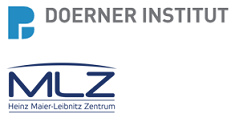Speaker
Description
Museum objects with a painted metal structure are often found within industrial, scientific and technical collections. The conservation of these objects presents a challenge because of their composite nature. The interactions between the components of the system can lead to different alteration phenomena than what would be expected for the paint or metal alone, resulting in the need for specific conservation strategies. The CoPaiM project (Conservation of Painted Metals) seeks to contribute to the development of new conservation strategies for historic painted metal objects. A first research aim of this project is to enhance the knowledge of the material system and its alteration phenomena through the study of historic objects.
A corpus of painted iron objects from the 19th-early 20th century was studied using classic laboratory and synchrotron analytical techniques. Samples of paint and corrosion products were obtained from the objects and prepared as cross-sections. Synchrotron-based µ-XRF mapping was combined with µ-XANES point analysis to obtain spatially resolved information about the elemental composition and speciation of the components within the stratigraphy. This approach was complementary to the results acquired by optical microscopy and µ-Raman spectroscopy, and led to the detailed characterization of the paint components and iron corrosion products present in the samples and to a qualitative micro-scale description of the alteration phenomena. This study provides not only an improved understanding of the historical techniques used for the preparation of the objects, but also a documentation of possible materials and alteration states present in the painted metal system, the discernment of which is crucial for the development of suitable conservation strategies.

